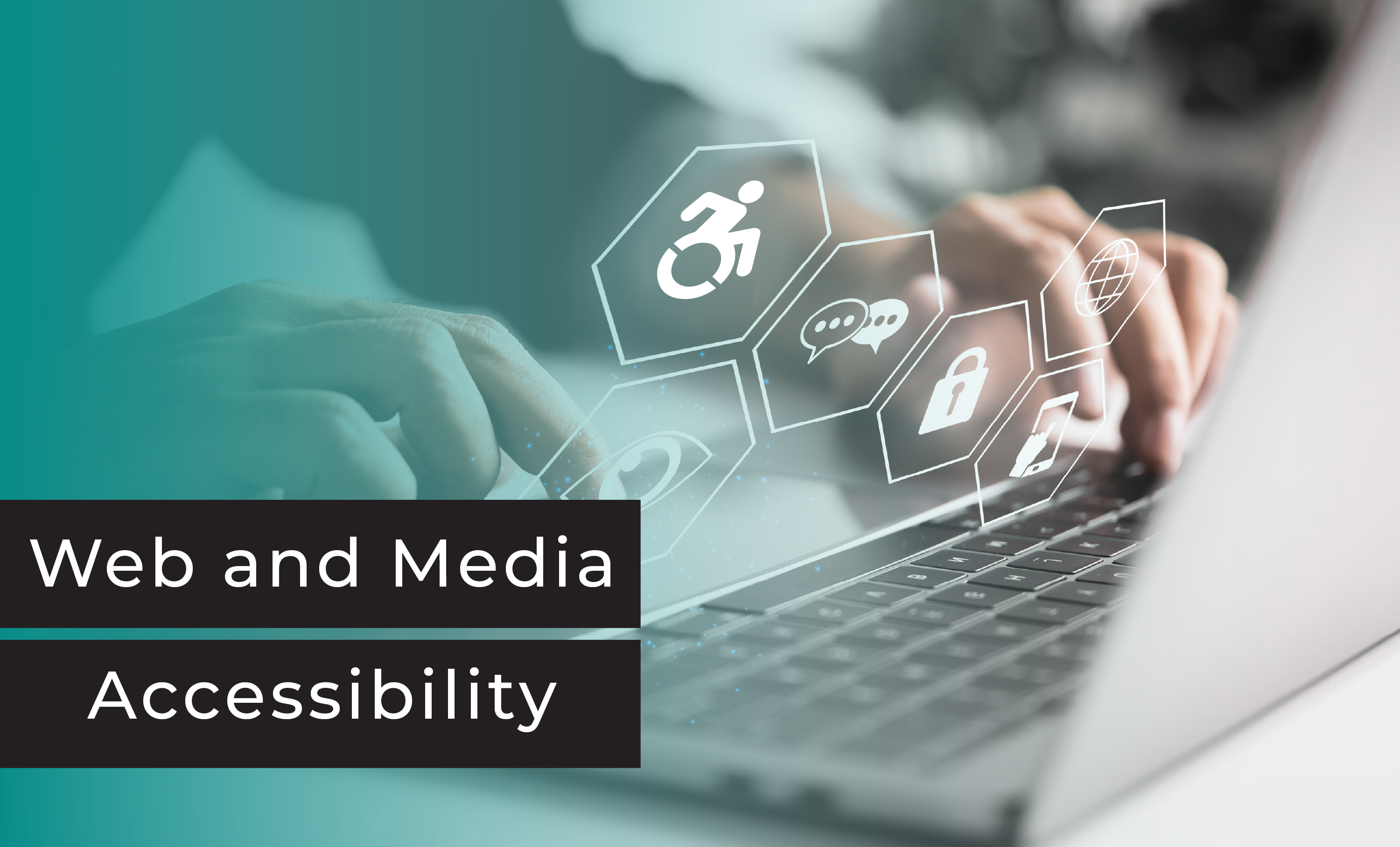Web and Media Accessibility


The digital age is advancing unlike any time before it. We have so much information at our fingertips. There are so many exciting easy-to-use programs and devices. Most importantly, more people are able to access information with them!
It is easy to make sure that everyone can access digital resources as long as designers and programmers think about accessibility right from the start.
Here's a checklist for designers and programmers. These are the things to think about when creating websites, webpages and PDFs.
Things to keep in mind:
When it comes to creating accessible sites and documents, keep these important questions in mind
- How do people view and navigate your site and media?
- How easy is it for people to use and access sites, links, documents and PDFs?
- Is it easy to understand the language, and are its links and elements recognizable?
- Can your digital media solutions maintain their usefulness as technology changes and advances?
View
- Describe appropriate images with alternative text for people who are blind or who have low vision. A screen reader uses alternative text (alt text) to describe an image. People can then understand the content they might not be able to see.
- High colour contrast makes for easier reading – keep colour-blindness in mind too!
- Expand acronyms so that everyone knows what the short form means!
- Tool tips make it easy for assistive tech users to access and use the site. Tool tips make navigating a PDF or form easy for a screen reader
Use
- Make sure to use H1-H6 headers in your PDFs. They act like titles and chapters in books for assistive tech to navigate!
- Make tool tips descriptive to avoid confusion.
- Make links for email addresses, websites and phone numbers to provide easy access.
- Take advantage of bookmarks in your PDFs for easy navigation. Bookmarks link to pages and chapters in PDFs, making them easier to navigate.
- Tag lists and form elements appropriately.
- Add a table of contents in your documents to cut the time spent searching!
- Put contact information at the beginning of documents or PDFs to help assistive tech users who might not wait to reach the end!
Understand
- Colour and underline links to make clickable and non-clickable items distinct.
- Keep headers clear and concise to avoid confusion and misunderstanding.
- Use different typefaces, text weights or colours in header design to distinguish the headers.
- Use plain language as much as possible to connect with as many people as possible.
- Avoid writing header text in all-caps – Assistive tech often reads the text out loud letter-by-letter instead of the whole word.
- Make sure to specify your document or site language. For example, if your site is in English say so in the language tag.
Maintain
- Create accessible options that can remain as they are for a long time on your website or in your PDF.
- Adding accessible options to existing media and technology lets accessibility last longer without having to keep making things from scratch.
- The ability for a user to choose a platform or technology and have accessibility regardless of their choice is invaluable!
